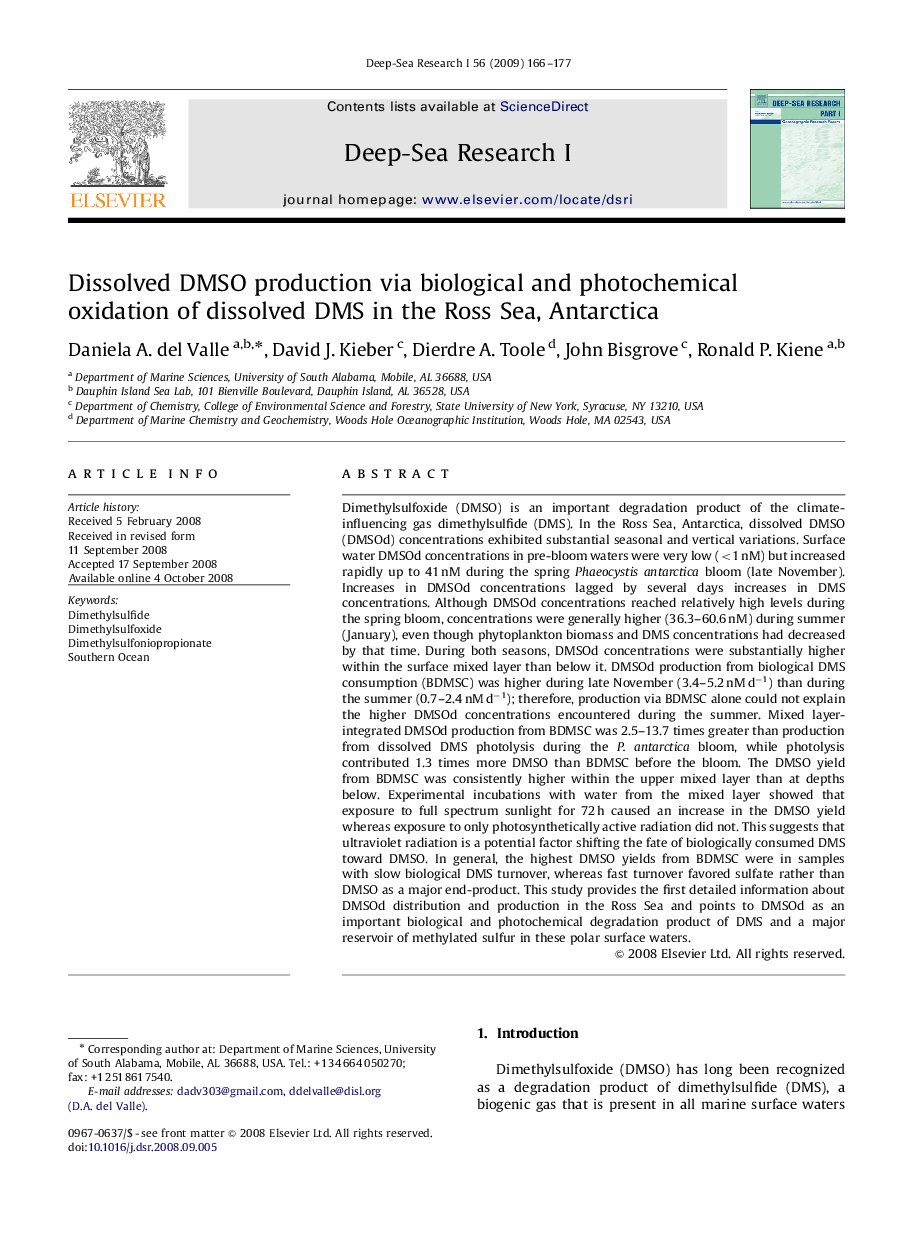| Article ID | Journal | Published Year | Pages | File Type |
|---|---|---|---|---|
| 4535391 | Deep Sea Research Part I: Oceanographic Research Papers | 2009 | 12 Pages |
Dimethylsulfoxide (DMSO) is an important degradation product of the climate-influencing gas dimethylsulfide (DMS). In the Ross Sea, Antarctica, dissolved DMSO (DMSOd) concentrations exhibited substantial seasonal and vertical variations. Surface water DMSOd concentrations in pre-bloom waters were very low (<1 nM) but increased rapidly up to 41 nM during the spring Phaeocystis antarctica bloom (late November). Increases in DMSOd concentrations lagged by several days increases in DMS concentrations. Although DMSOd concentrations reached relatively high levels during the spring bloom, concentrations were generally higher (36.3–60.6 nM) during summer (January), even though phytoplankton biomass and DMS concentrations had decreased by that time. During both seasons, DMSOd concentrations were substantially higher within the surface mixed layer than below it. DMSOd production from biological DMS consumption (BDMSC) was higher during late November (3.4–5.2 nM d−1) than during the summer (0.7–2.4 nM d−1); therefore, production via BDMSC alone could not explain the higher DMSOd concentrations encountered during the summer. Mixed layer-integrated DMSOd production from BDMSC was 2.5–13.7 times greater than production from dissolved DMS photolysis during the P. antarctica bloom, while photolysis contributed 1.3 times more DMSO than BDMSC before the bloom. The DMSO yield from BDMSC was consistently higher within the upper mixed layer than at depths below. Experimental incubations with water from the mixed layer showed that exposure to full spectrum sunlight for 72 h caused an increase in the DMSO yield whereas exposure to only photosynthetically active radiation did not. This suggests that ultraviolet radiation is a potential factor shifting the fate of biologically consumed DMS toward DMSO. In general, the highest DMSO yields from BDMSC were in samples with slow biological DMS turnover, whereas fast turnover favored sulfate rather than DMSO as a major end-product. This study provides the first detailed information about DMSOd distribution and production in the Ross Sea and points to DMSOd as an important biological and photochemical degradation product of DMS and a major reservoir of methylated sulfur in these polar surface waters.
